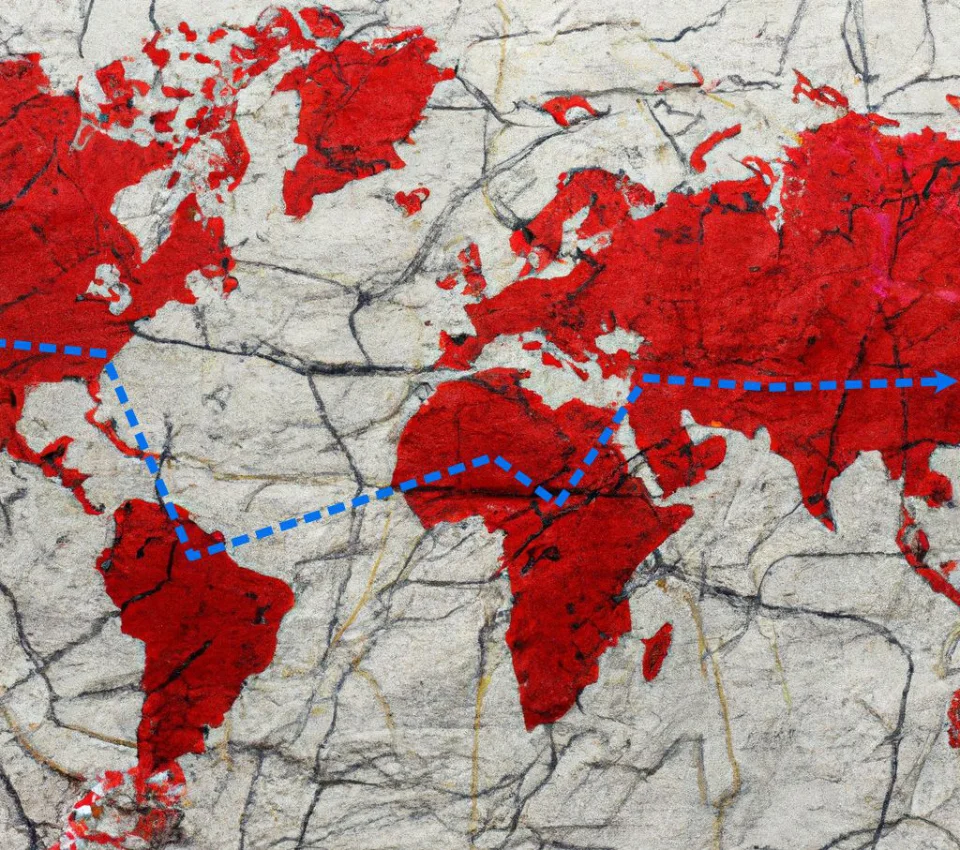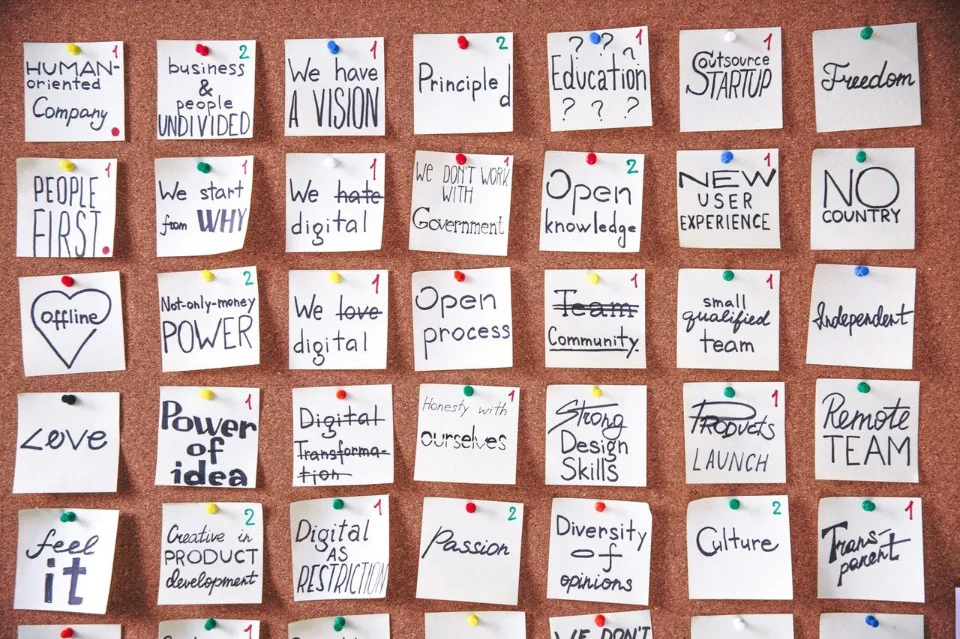The Benefits of Creating Customer Journey Maps
A customer journey map is a document that details the steps a customer takes when interacting with a company, from awareness of a need all the way to becoming a loyal advocate. Journey maps answer how an organization can better engage customers across multiple touchpoints, how to provide value that keeps customers coming back, and make services more relevant.
Wes Hunt

A customer journey map is a document that details the steps a customer takes when interacting with a company, from awareness of a need all the way to becoming a loyal advocate. Journey maps answer how an organization can better engage customers across multiple touchpoints, how to provide value that keeps customers coming back, and make services more relevant. In short, customer journey maps are good for both the customer and the company. Journey maps are an essential tool for UX designers, product owners, and user researchers who want to get a better understanding of their customers' needs and pain points. Creating a customer journey map can help you identify areas where your customer experience could be improved. Let's take a closer look at how creating customer journey maps is beneficial for both companies and the customers involved.
What is a Customer Journey Map?
A customer journey map is a graphical representation of the steps your customers take as they interact with your company or brand. Journey maps show how customers discover your product, make a purchase, and continue to use (or not use) your product over time. Customer journey maps can be used to answer important questions such as:
- How can we better engage our customers across multiple touchpoints?
- How can we provide value that keeps customers coming back?
- How can we make our services more relevant to our customers?
- What points in the customer journey evokes strong emotion in our customers?
Creating Customer Journey Maps is Good for Customers
When you create a customer journey map, you are effectively putting yourself in your customers' shoes and trying to see things from their perspective. This exercise can help you to empathize with your customers and understand their needs better. In turn, this can help you to design better products and experiences that meet their needs. Creating customer journey maps is good for customers because it helps companies to build products that they actually want and need.
Customers Appreciate Organizations that are Customer Focused
User journey maps are an excellent way for everyone in the organization to understand the entire journey that the customer takes. A user journey map is from the user’s point of view so it helps the company have more of a customer focus.
Examples Where Journey Maps Help Customers
- Identifying current performance issues, like support or information request response times. Either not setting customer expectations or ignoring queries is the same as setting money on fire, an ignored customer or potential customer is likely to go elsewhere.
- Since journey maps are from a user perspective, they prioritize change where it matters for customers, not for company politics.
- A journey map also makes the emotional state of users a focus. Emotions are often overlooked when considering priority, which is a mistake. If a gap causes high stress in a customer, it is also likely to increase churn over a missing feature that doesn’t evoke an emotional response. Product designers/engineers should think of stress cases over edge cases.
Creating Customer Journey Maps is Good for Companies
Customer journey maps can also be very beneficial for companies. By making even small changes based on the insights you gained from creating your customer journey map, you can improve customer satisfaction, retention, and loyalty. In short, creating customer journey maps is good for business!
Journey Maps Improve Customer Experience
Journey maps help you to identify areas of your customer experience that need improvement. This will enable the company to see where the possible pain points are and if planned updates will take care of them. The journey map can be referred to during strategy sessions to see if a feature actually does anything for the customer. This sounds crazy right? However, ideas that come from assumptions by individuals quite often make it into releases without any validation against real customers. A journey map can act as a check to at least consider the impact a new feature may have on the customer.
Journey Maps are a Map of Research Insights
They show all of the research for what the customer experiences using a product in one concise picture. A journey map can be a powerful and fast way to share research findings with stakeholders. Just as importantly many stakeholders will be more likely to review a journey map as opposed to a report. If you are finding it difficult to get people in your company to review your research insights around customers, try sharing them as a customer journey map. You can still cross link points in the map with your research report, or open the report with a journey map. The map can act as a summary that allows stakeholders to not only quickly find the area they are interested in, but also see at a glance other phases of the journey.
Journey Maps Can Highlight the Present and Map the Goal State
User journey maps can be used in a current state to show what is currently happening as well as a future goal state to show what the user journey may become. From customer research, journey maps can highlight areas that a company may want to address.
Examples From Our Direct Experience
- In enterprise systems, potential end-users of your product may be the ones becoming aware and evaluating your product before the customer (the one buying your product) knows they need what you are offering. How do you aid these potential users to convince the decision maker?
- In Awareness phases, future customers may find out about your product from 3rd party sources like blogs, reviews, or social posts alongside other products. What can you do to further encourage 3rd party referrals?
- During research you may find that there are confusing content strategies around the experience during product use. Does marketing, the UI, and help documentation use the same terms and labels for features? Do labels and workflows match the user mental model?
- Current customers can be a product’s best advocate. Where do they go for help with your product? Do they need to go to forums or Stack Overflow instead of finding useful information on your help pages? It’s amazing how many products and services let random people provide the help their customers actually need while their own help pages are only thinly veiled marketing.
- Surprisingly the actual drivers of customer engagement are often poorly understood by internal stakeholders. We’ve seen journey maps act as both educator and reminder of the why customers engage the product. Principles in (especially large) companies often become too insulated from real customers and their experiences.
- Challenge existing company activities to improve CX and reduce customer or even employee churn.
- Creating a common vision and framework to manage the future customer experience. Like service blueprints, journey maps can also help reduce the effect of siloed organizations and their weaknesses. Siloed teams often act on their own and have less effect on the whole customer journey because of it.
Just like other maps, a journey map can also act as a goal state for teams to achieve. If you find gaps or pain points in the customer experience, it can be helpful to mark those for future work. A visual reminder like a journey map can be useful to bring up in strategy meetings when prioritizing work to be done.
Conclusion
As you can see, there are many benefits to creating customer journey maps. If you're looking to improve your customer experience, this is definitely an exercise worth doing. Journey maps help UX designers, product owners, and customer experience managers look at the overall customer lifecycle to build better relationships. A customer journey map shows an individual’s interaction with a company and brand over time, highlighting the decisions to acquire a solution and stay loyal to it. If you're not already using journey maps as part of your product strategy, we highly recommend doing so! Not only will it lead to happier customers, but it will also give you a competitive edge against other companies in your industry.


